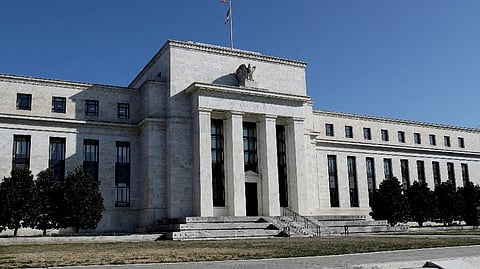

CHENNAI: Meteorologists tell us that global warming has created new problems for forecasters. Not only are hurricanes getting stronger, they’re also intensifying more rapidly than they used to, making it difficult to issue early warnings for communities in their path. Notably, officials in Florida’s Lee County waited for definitive evidence that they would be hit hard by Hurricane Ian before ordering evacuations — and by then it was too late for many people.
Is something similar happening with economic policy? Recently I wrote about the growing buzz from economists and businesspeople to the effect that the Federal Reserve, which has been trying to slow the economy to fight inflation, is braking too hard. Since then the buzz has intensified. And I’m increasingly convinced that, despite a disappointing inflation report and what still looks by some measures like a robust job market, the Fed is getting behind the curve.
We are, I’d now argue, just starting to see the effects of the interest rate hikes the Fed has been making since early this year. Never mind what inflation and jobs data are saying right now; there’s a lot of reduction in inflationary pressures — and a lot of drag on output and employment — already in the pipeline. The economy, as some business analysts like to say, may well be “rolling over.”
And the risks a hard-money policy poses to financial stability and the world economy in general are looming larger. Part of the problem is that the Fed hasn’t done what it’s doing now — drastically tightening money to fight inflation — for a long time, indeed since the early 1980s. And some analysts, perhaps including people at the Fed, may have forgotten one important lesson from monetary policy in the bad old days. Namely, it takes a significant amount of time before higher interest rates translate into either an economic slowdown or a drop in the inflation rate. Consider how Fed policy affects the real economy. One of the main channels is through housing. Higher interest rates lead to reduced demand for houses, which leads to a fall in construction; as incomes earned in housing construction slide, this leads to reduced demand for other goods, and the effects spill over to the economy at large.
But all of this takes a while. The Fed’s rate hikes have indeed led to a sharp fall in applications for building permits. However, construction employment hasn’t yet even begun to decline, presumably because many workers are still busy finishing houses started when rates were lower. And the wider economic effects of the coming housing slump are still many months away.
The other major channel through which the Fed affects the economy is via the value of the dollar. A strong dollar makes US products less competitive on world markets; falling exports and rising imports will eventually be a major economic drag. But it takes time to shift to new suppliers, so this effect won’t really happen until next year.
In short, current inflation and employment are basically telling us about the past; we need to look at other data for a glimpse of the future.
For example, a new report shows that unfilled job offerings fell sharply in August. Why is this important? Many economists — especially economists who have been warning about persistent inflation — argue that the tightness of the labour market is better measured by the ratio of job vacancies to unemployment than by the unemployment rate itself. Another new report shows that demand for apartments has stalled, which will eventually translate into a decline in rent growth — which basically drives official estimates of the cost of shelter, a key component of most measures of underlying inflation.
Again, I can’t offer any certainty about what’s coming. But we really, really don’t want the Fed to do a Lee County, and refuse to act on warnings of an economic storm until all the uncertainty is gone. By then it will be too late to avoid the worst.
Krugman is a columnist with NYT©2022
The New York Times
Visit news.dtnext.in to explore our interactive epaper!
Download the DT Next app for more exciting features!
Click here for iOS
Click here for Android